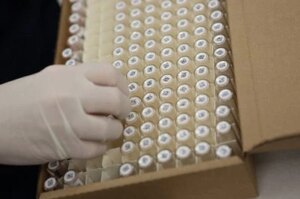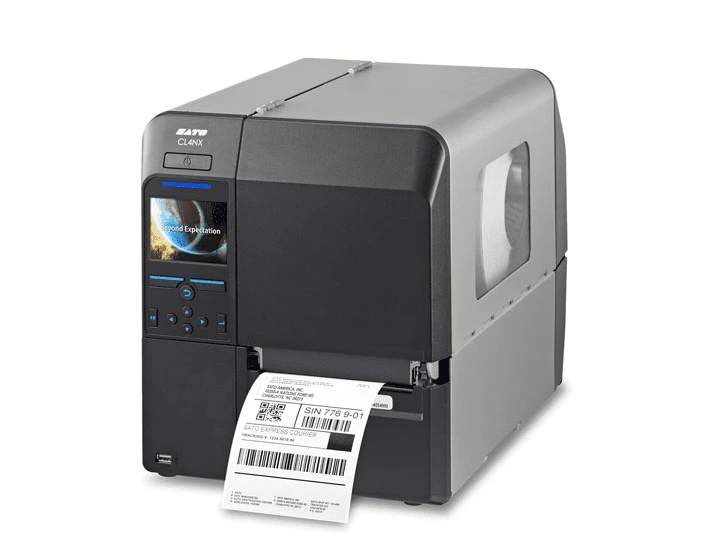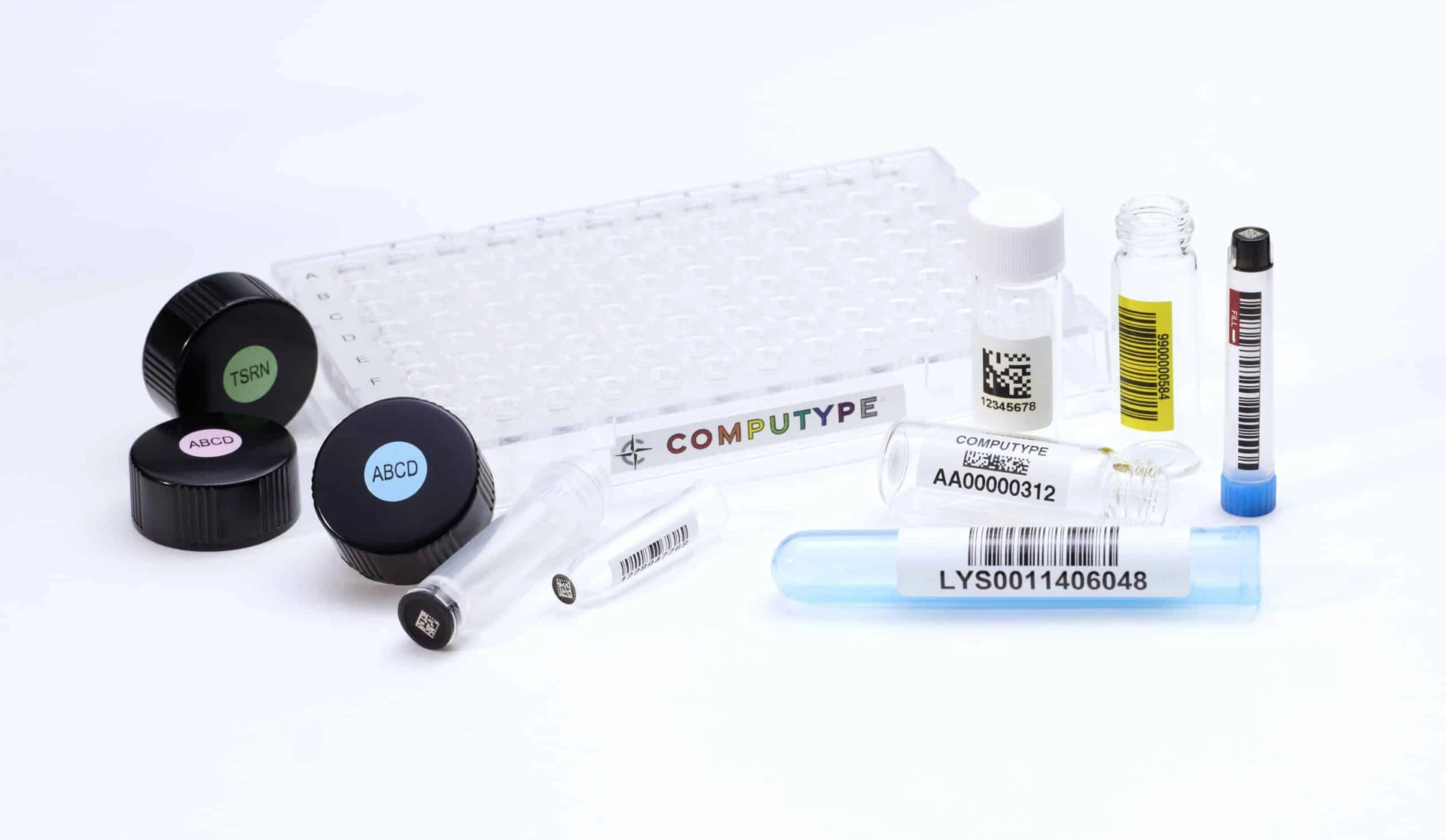Inefficiencies in a lab do an excellent job of slowing down processes and not allowing your facility to live up to its total throughput potential.
Embarking on an effort to reduce these inefficiencies is what intimidates many labs as it can seem like a big undertaking; but really, the biggest challenge often lies in pinpointing where your process could use improvements.
There are likely quick wins that can be achieved through feasible projects within your lab.
At Computype, we have been working with labs in the healthcare industry globally for over 40 years, and we decided to devote an article to nine things we have noticed that successfully improve efficiencies in the lab.
1. Automate your lab’s process
Working towards automating your laboratory processes is key to improving efficiencies for a few reasons: it reduces human error that can (and does) occur, and automation can accomplish routine, repetitive tasks more accurately than a human can.
For example, samples and tests require identification; the label needs to be in the same place on the container every time to ensure accuracy throughout the entirety of the process. In a laboratory, accuracy is key, and it is difficult to guarantee precision when an employee is placing a label manually.
Additionally, processes are made more efficient with automation. Integrating labeling into a larger piece of automation also improves the flow of the sample through the system and the process. With automation, you are also able to utilize barcode tracking and handling data to gain constant knowledge as to what point in the process that sample or test resides.
Aside from labeling, automating your lab as a whole can also greatly reduce inefficiencies. Automation is faster, more precise, and allows you to allocate your resources more efficiently and sparingly. Increased throughput time, as well as less rework and fewer errors that come with the implementation of automation will make noticeable differences in the efficiency of your lab.
2. Organize your lab
It is crucial to have an organizational strategy in your lab to ensure the tracking and tracing of each sample with guaranteed accuracy. Documentation is a good strategy in keeping your laboratory processes in order and organized.
A productive method that is already prominent in the industry is barcoding- this allows you to track and trace every sample and know exactly where each test element resides in the process, in addition to being able to identify respective information and data.
Color identification is also a productive means of organization, which can also pair hand-in-hand with your labeling strategy. Adding color to your labeling strategy- whether it be a logo, a color marking, or a graduation line, can help employees associate certain samples with paperwork, coordinate with colored caps, or easily sort. Organizing your samples and products is very important in a laboratory setting and will increase the productivity and throughput of your processes.
3. Outsource tasks within your lab process
Outsourcing is a great option if you want to expedite and streamline processes. There are many tasks within a given lab process that you can outsource, leaving the lab much more time that they can devote towards science and processing.
As it relates specifically to barcoding and labeling, there are outsourcing options for the procurement, tare weighing, labeling, and/or packaging of your labware, as well as printing, or even testing.
Although this is a very productive option for speeding up processes in your laboratory and reducing inventory, it may not be possible depending on how variable your information and products are.
Barcoding, for instance, and its ability to be outsourced is dependent on information that laboratories have available before ordering labware or labels, how variable the information may be, and what information is required on the label. Outsourcing programs like Computype’s Labware Prep™ Services have proven to reduce errors by up to 30%, so if possible, outsourcing can have quite the impact.
4. Single source your supplies
Obviously this is not always an option; however, if single sourcing is an option, it is one of the simplest ways to reduce expenses and administrative effort. It is beneficial to your lab in many ways to have a trusted supplier that knows your processes and can provide the right products for all your applications.
Single sourcing also reduces the chance that the supplies you use do not work well together. In the case of labels and labware, if these do not work well together, you may be compromising the integrity of all samples and tests in your lab. This is an avoidable problem if you are using a single provider who can ensure labels and associated containers have been tested to complement each other.
In order to optimize the benefits you receive from single sourcing your supplies, take advantage of additional services that are offered by suppliers. For example, some suppliers will offer tare weighing or custom packing as part of their labware service program.
5. Integrate
Whether it be with automation or outsourcing partners, integration of your processes to make them work together and communicate will expedite your workflow, while at the same time making processes more efficient and less prone to errors.
With the integration of your processes, throughput will improve. In some cases, outsourcing certain tasks can even eliminate the need for automation, or vice versa. Whichever way you decide to integrate, you will likely see efficiency improvements, as your laboratory will be functioning as one cohesive whole.
6. Future proof your processes
In our current times of exponentially advancing technology and the Internet of Things, it is important that if you decide to invest in lab technology, that it is RFID capable, or flexible enough to accept future technology or add-ons. RFID is radio frequency identification; radio waves are used to identify objects and track them throughout a process through a chip.
Technology is improving at such a high rate that it is important to avoid investing in anything that could potentially become obsolete in the coming years. New technology in the form of automation, robotics, and other systems could enter the industry at any minute, so it is important to be both prepared and aware.
Additionally, make sure that your equipment has the capability to connect and communicate with each other. Automation and communication within your process gives you a huge efficiency boost.
To put this into perspective, if you are having to clean a specific instrument or area before being able to perform a test or task, lean processes are not being followed and, therefore, efficiencies are lost.These are all very common inefficiencies that we see all too frequently in laboratories. It is important to strive for continuous improvement in your lab. Becoming more aware of your inefficiencies is also important from a competitive differentiation standpoint; as the industry is moving towards the future, there are a lot more moving parts to keep track of, so it is important that you continue to prioritize reducing inefficiencies.
In healthcare, one of the most common ways to differentiate yourself from your competitors is to bring something to market faster such as a drug, treatment, test, or platform. Inefficiencies slow processes down and are a hindrance to the growth of your business, achieving launch dates, and development.
Barcoding and identification tactics are a great way to improve efficiencies in your lab; if you have a reliable barcoding or RFID tracking system, you are better able to integrate your systems, utilize automation, and communicate throughout the organization. The opportunity for efficiency improvements live in every laboratory, and keeping an eye on these nine areas will keep the inefficiencies under control and top of mind.
7. Cross train your employees
Cross training your employees, as basic as it may seem, is something to strongly consider when trying to increase efficiencies. This allows for consistent allocation of resources, as well as no holes in the process if unexpected staffing circumstances arise.
Additionally, cross training promotes the idea of cohesiveness in your laboratory and process. This way, there are no gaps or missing pieces, as you have many capable resources for each task or project.
8. Go paperless (cloud technologies)
Going paperless and using cloud technologies is a beneficial option in the case that your laboratory has multiple locations utilizing the same data, as they will be accessible securely from any location.
Cloud utilization allows for speed of information sharing, which is huge in increasing throughput and efficiencies. Automation and the Internet of Things are also now allowing companies to link automation, and log usage time. With this technology, you can analyze equipment and associated data throughout an entire global organization and determine where there is open capacity for your specific test or need, for example.
9. Establish clean environments
As elementary and obvious as this seems, it is especially important that your laboratory environment is kept clean and non-contaminated. Although this may not even seem worthy of mention, we often see that this is forgotten or overlooked, and it is an easy fix to help boost efficiency.
All of your labware should be processed and stored in a clean and controlled environment, to ensure that your processes will not be corrupt. Prioritize the cleanliness of your environment to maintain the integrity of all of your laboratory operations, and you will avoid rework and potential ethical issues.
To put this into perspective, if you are having to clean a specific instrument or area before being able to perform a test or task, lean processes are not being followed and, therefore, efficiencies are lost.These are all very common inefficiencies that we see all too frequently in laboratories. It is important to strive for continuous improvement in your lab. Becoming more aware of your inefficiencies is also important from a competitive differentiation standpoint; as the industry is moving towards the future, there are a lot more moving parts to keep track of, so it is important that you continue to prioritize reducing inefficiencies.
In healthcare, one of the most common ways to differentiate yourself from your competitors is to bring something to market faster such as a drug, treatment, test, or platform. Inefficiencies slow processes down and are a hindrance to the growth of your business, achieving launch dates, and development.
Barcoding and identification tactics are a great way to improve efficiencies in your lab; if you have a reliable barcoding or RFID tracking system, you are better able to integrate your systems, utilize automation, and communicate throughout the organization. The opportunity for efficiency improvements live in every laboratory, and keeping an eye on these nine areas will keep the inefficiencies under control and top of mind.
Connect with our labelling experts today
Blog article form
"*" indicates required fields



